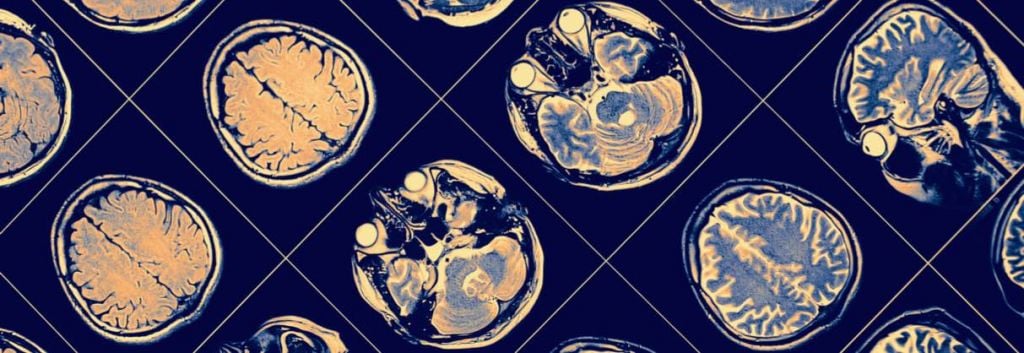Newsletter Signup - Under Article / In Page
"*" indicates required fields
Gene therapy has traditionally been applied to well-understood diseases where a single genetic mutation was to blame. A new generation of technology is expanding the potential of gene therapy to treat conditions that were previously unreachable.
Since the first gene therapy clinical trials in the 1990s, the technology has made its way into the market for conditions ranging from blindness to cancer.
Gene therapy has the potential to fix any genetic mutation causing disease by inserting a new copy of the faulty gene. However, its reach has historically been limited.
“We’ve been constrained with the things we can do with gene therapy,” said Dmitry Kuzmin, Managing Partner at 4BIO Capital, a London-based VC that specifically invests in advanced therapies. “If you look across the successes in gene therapy in the last five years, most of these were in diseases that are pretty straightforward from the engineering perspective.”
Technical limitations have meant that gene therapy has been restricted to rare diseases caused by a single genetic mutation, as well as to certain areas of the body, such as the eye and the liver.
A new generation of gene therapy
According to Kuzmin, there have been so far three generations of gene therapy technology. Generation one would be classic single-gene replacement, such as Luxturna, a gene therapy to fix a specific genetic mutation causing blindness. Generation two would consist of using gene therapy to introduce new functions. An example is Kymriah, where immune cells are equipped with a molecule that helps them hunt down cancer cells.
The third generation is the one that could hold the key to unlocking the full potential of gene therapy. It englobes several technologies that can be used to introduce a new drug target into the patient, making it possible to turn the therapy on and off as well as to tune its intensity.
“As the first two generations get optimized and the third generation enters the clinic, we are now expanding our reach into areas that have been previously rather inaccessible,” Kuzmin told me. “One of them is the brain.”
Getting inside the brain
Treating the brain has long been a huge challenge for medicine. Take epilepsy, for example.
“Epilepsy affects 1% of the whole population and about 30% of people with seizures of epilepsy continue to have seizures despite medication,” said Dimitry Kullmann, Professor at University College London. “There’s a paradox. We have a good understanding of the mechanisms behind epilepsy, but we’re unable to suppress seizures in a significant proportion of people with epilepsy.”
“The reason is that the molecules that we use for drugs don’t target the epileptic zone of the brain; they bathe the entire body with medication,” Kullmann told me. “These drugs don’t differentiate between neurons and synapses that derive the seizures, and those parts of the brain that are responsible for memory, sensory functions, motor functions and balance.”
Gene therapy could provide a solution for this problem. Kullmann’s group has been researching this approach for years and is now getting ready to start the first clinical trial in humans.
A gene therapy can be directly injected in the area of the brain causing seizures. Furthermore, using DNA sequences called promoters, it is possible to restrict the effect of gene therapy to specific neurons within that area. In the case of epilepsy, gene therapy can be used to decrease the activity of only excitatory neurons, which cause epileptic seizures when they are overactive.

Another approach that Kullman’s group is testing is chemogenetics. “The idea here is to use gene therapy to put a specific receptor into the neurons,” explained Kullmann. This receptor is designed to respond to a drug that, when given to the patient, decreases the activity of the neuron to suppress seizures.
“The advantage is that you can switch on and off the therapeutic effect on demand by just giving, or not giving the drug,” Kullmann said. This approach can thus make gene therapy more precise, being able to tune it to the specific needs of each patient. In addition, it reduces the big challenge of getting the dose right in a one-off treatment.
Ultimately, this technology could allow scientists to target a wide range of conditions that come under the umbrella of epilepsy, rather than just a specific form of the condition caused by a genetic mutation.
The approach could be extended to other conditions involving the brain, such as Parkinson’s, ALS and pain. However, this kind of research is still at an early stage and it will take a while until its potential is proven in humans.
Going beyond a single mutation
Blindness has been a major target of gene therapy because of the fact that the eye is an ideal target for this technology. The activity of the immune system is suppressed in the eye, minimizing the chances of rejection. In addition, unlike other cells in the body, those involved in vision are not renewed over time, being able to retain the injected DNA for years.
However, there are hundreds of genetic mutations that can cause blindness. With the classical gene therapy approach, a different therapy would have to be developed from scratch for each mutation. While some companies are doing just this for the most common mutations causing blindness, many other less frequent mutations are being left behind.
Others are turning to new generations of gene therapy technology. “We figured out that it would be very, very difficult to use the classical gene therapy approach in each individual mutation,” said Bernard Gilly, CEO of GenSight, a Parisian biotech developing gene therapies for blindness.
While the company’s leading programs follow this classical approach, the company has also started clinical trials using a technology called optogenetics. Following a similar principle to gene therapy, optogenetics consists of introducing a protein that reacts to light into a cell.

GenSight is using optogenetics to develop a single therapy for the treatment of retinitis pigmentosa. This genetic condition can be caused by mutations in any of over 200 genes and results in progressive vision loss in children due to the degeneration of photoreceptor cells that perceive light and send signals to the brain.
With optogenetics, it would be possible to transfer the lost photoreceptor function to the cells in the retina that are responsible for relaying visual information to the brain. Using specialized goggles, the images captured by a camera are transformed into light patterns that stimulate these cells in the precise way needed for the brain to form images.
The company is currently testing this approach in clinical trials. “We believe that this approach will allow us to restore vision in those patients who became blind because of retinitis pigmentosa,” Gilly told me.
Optogenetics would not work a miracle, but it might be able to give people back the ability to navigate an unknown environment with a certain level of autonomy. Recognizing faces is a more challenging goal; although reading is not yet on the horizon, according to Gilly.
Still, the potential of optogenetics to address multiple genetic mutations with a single treatment might be revolutionary. As long as the neurons responsible for sending light signals to the brain are intact, this approach could be extended to other forms of blindness. In addition, conditions affecting the brain such as epilepsy, Parkinson’s or ALS could be treated with this approach by introducing an implant to shine light on the target neurons.
However, approaches applying optogenetics to the brain are still further down the line. While optogenetics technology has been around for over 20 years, its application in humans is still very limited and in the early stages of research.
Consolidating the next generation
Chemogenetics and optogenetics are just two out of a wave of new technologies addressing the historical limitations of gene therapy. Other approaches are in development, such as using thermogenetics, which consists of introducing proteins that are activated by the heat created by infrared light.
With a growing range of tools available, it is becoming easier than ever for scientists to develop gene therapies that can address the specific challenges of different conditions affecting areas of the body. Traditionally, locations such as the heart, the lungs or the pancreas have been particularly difficult to target with gene therapy. That might soon stop being the case.
“As we go forward, we’re interested in taking gene therapy out of this little box and trying to use all the knowledge we have to benefit patients in larger indications,” said Kuzmin.
As gene therapy expands into more mainstream conditions, it could take precision medicine to a whole new level and help address the big variability that is often seen across patients with the same diagnosis.






